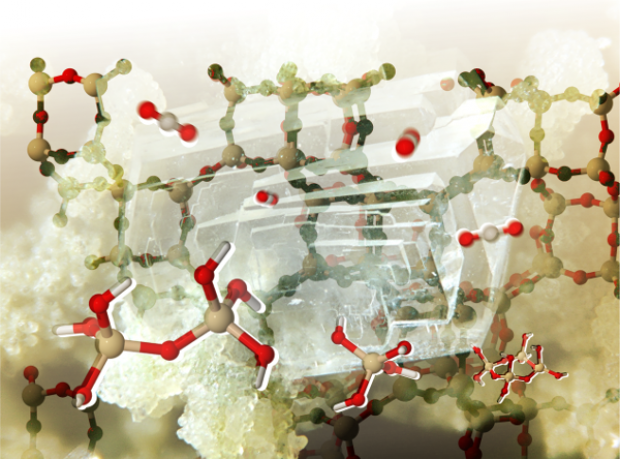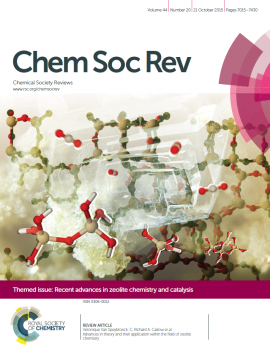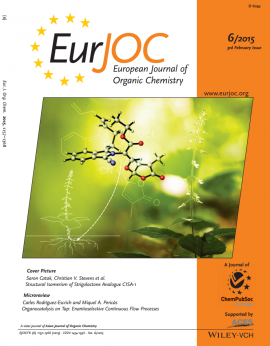Shape-selective diffusion of olefins in 8-ring solid acid microporous zeolites
Abstract
The diffusion of olefins through 8-ring solid acid microporous zeolites is investigated using molecular dynamics simulations techniques and using a newly developed flexible force field. Within the context of the Methanol to Olefin (MTO) process and the observed product distribution, knowledge on the diffusion paths is essential to obtain molecular level control over the process conditions. Eight-ring zeotype materials are favorably used for the MTO process as they give a selective product distribution towards low carbon olefins. To investigate how composition, acidity and flexibility influence the diffusion paths of ethene and propene, a series of isostructural aluminosilicates (zeolites) and silicoaluminophosphates (AlPOs and SAPOs) are investigated with and without randomly distributed acidic sites. Distinct variations in diffusion of ethene are observed in terms of temperature, composition, acidity, and topology (AEI, CHA, AFX). In general, diffusion of ethene is an activated process for which free energy barriers for individual rings may be determined. We observe ring dependent diffusion behavior which can not solely be described in terms of the composition and topology of the rings. A new descriptor had to be introduced namely the accessible window area (AWA), inspired by implicit solvation models of proteins and small molecules. The AWA may be determined throughout the molecular dynamics trajectories and correlates well with the number of ring crossings at the molecular level and the free energy barriers for ring crossings from one cage to the other. The overall observed diffusivity is determined by molecular characteristics of individual rings for which AWA is a proper descriptor. Temperature-induced changes in framework dynamics and diffusivity may be captured by following the new descriptor throughout the simulations.
 Open Access version available at UGent repository
Open Access version available at UGent repository



